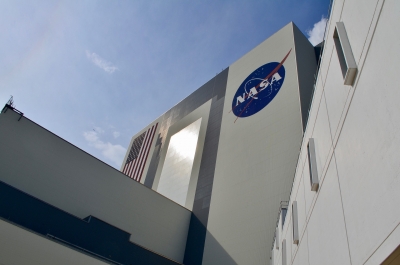Washington: A team of NASA researchers has developed a technique to predict radiation risk on the International Space Station (ISS) for future exploration missions.
Space radiation originates from three primary sources: particles trapped in the Earth’s magnetic field, particles shot into space during solar flares, and galactic cosmic rays, which originate outside our solar system.
Published in the journal Nature-Scientific Reports, results from an ISS Medical Monitoring study of International Space Station astronauts demonstrate how the sensitivity of an individual astronaut’s DNA to radiation exposure on Earth can predict their DNA’s response during spaceflight as measured by changes to their chromosomes.
“We wanted to know if it is possible to detect and measure radiation exposure damage in the bodies of astronauts, and if there were differences based on age, sex, and other factors that could be measured before they go into space,” said senior scientist Honglu Wu from NASA’s Johnson Space Center in Houston.
“We hope to use these measurements to help develop and compare methods of protecting astronauts from radiation,” Wu said in a statement on Friday.
The study involved three key measurements. Before astronauts flew to the station, researchers examined their blood cells to assess their baseline chromosomal status against which any future alterations could be measured.
These blood samples were intentionally exposed to gamma-ray radiation on Earth to measure how easily their cells accumulated chromosomal changes.
This measurement established each astronaut’s inherent sensitivity to radiation.
Finally, after the astronauts returned from their missions, the study team again took blood samples from the individuals to assess their level of chromosomal alterations.
“It was an intriguing challenge to develop a statistical method for analyzing all of the blood samples to see if an astronaut’s pre-flight levels of radiosensitivity actually plays a role in predicting their spaceflight-induced chromosome alterations,” said Feiveson.
After analysing the data, the researchers found that older crew members had higher levels of baseline chromosomal irregularities, and the blood cells of older astronauts were more sensitive to developing chromosomal alterations compared to younger crew members.
“Crew members with higher inherent sensitivity, as determined by gamma radiation on the ground, were more likely to see higher levels of changes to their chromosomes in their post-flight blood samples compared to those with lower sensitivity,” the results showed.
Individuals who showed higher baseline chromosomal alterations in their pre-flight blood samples tended to also be more sensitive to developing additional chromosomal changes compared to astronauts with low baseline levels.
“The findings suggest that if older astronauts indeed have higher sensitivities to radiation, they might be at higher risk of chromosome alterations,” said Wu.
Younger astronauts are thought to be more susceptible than older astronauts to the long-term health consequences resulting from space radiation exposure.
This is partly because younger astronauts have more lifespan remaining and could live long enough to develop a cancer from the radiation exposure; it usually takes five to 20 years or more after the radiation exposure for cancer to occur.
NASA’s Human Research Programme seeks to conduct research in the field of medical countermeasures such as pharmaceuticals and early disease detection technology to help mitigate the consequences of space radiation exposure.
(IANS)


Comments are closed.